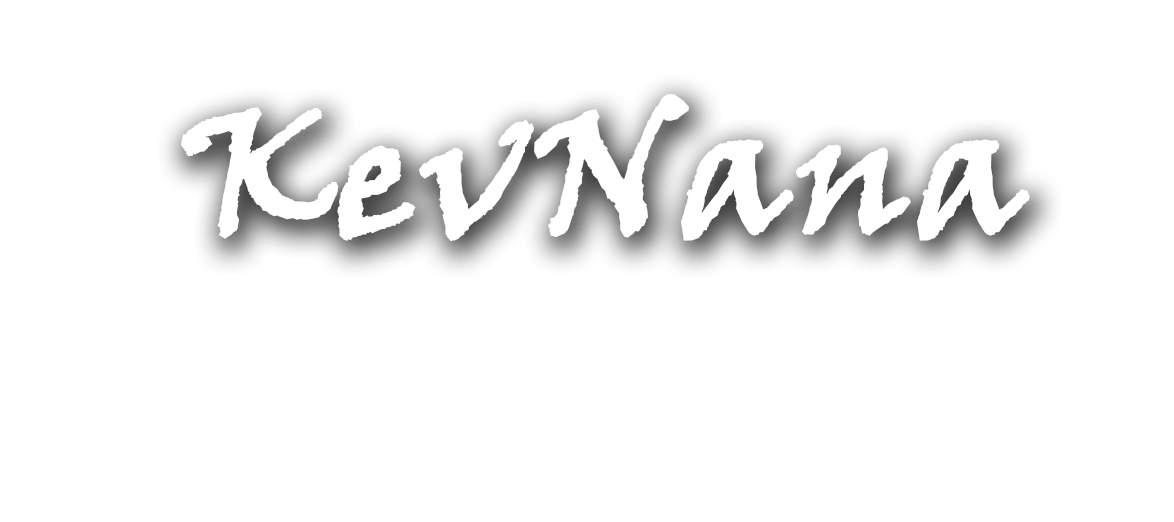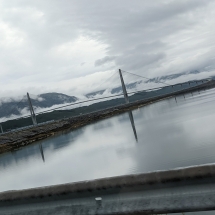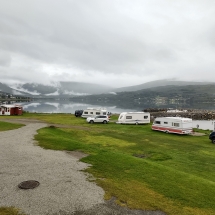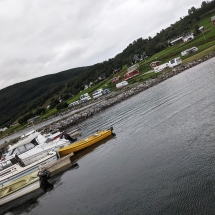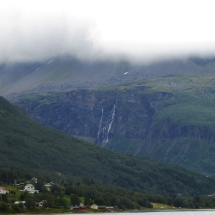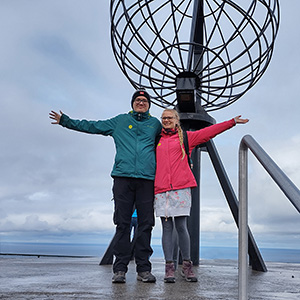
Scandinavia (2021): From Thuringia to the North Cape and back
Inhalt/Content
Narvik and the Polar Park
We cross the Arctic Circle
We left early in the morning as we had a long journey ahead of us. Halfway there should be a very special highlight: Crossing the Arctic Circle. Along the E6, the highway leading north, the corresponding coordinates of the Arctic Circle were well marked. Arrived at the appropriate place was the Arctic Circle Center. This consisted mainly of a very large souvenir shop and some monuments. In addition, travelers have built countless small cairns throughout the area. Of course, we each grabbed a stone and put it with the others. Another funny scene happened in the souvenir shop. I was able to observe how an elderly Norwegian woman went to the cash register and said something in Norwegian to the seller. He seemed a bit indignant and made her understand in English that unfortunately he didn’t speak Norwegian. That wasn’t a tourist, that was the seller! And yet it’s great that English is so widely spoken in Scandinavia that the lady simply switched to English and the two of them were able to communicate so well. Later I could see how the salesman was talking to his colleague – and that in Polish. After the Polish information signs on the ferry and the Polish-language tours in the museum in Oslo, this was the next confrontation with the Polish community here in Norway.
After crossing the Arctic Circle, we continued north through numerous tunnels, some of which were poorly lit. We didn’t get to Narvik that day, because that would have been a bit too far. Instead we stopped at a campsite in Ballangen, about 40 minutes from Narvik. Similar to the one after our visit to Trondheim, the campsite was very large and family-friendly. There were several nice playgrounds and a rabbit enclosure on the site. There was also a small shop with groceries, camping equipment and souvenirs next to the reception. We parked directly on the beach again, but unfortunately couldn’t really enjoy the weather because it rained almost non-stop. I used one of the small breaks in the rain to go for a short run, which unfortunately remained relatively short because the rain returned. After the well-deserved shower, we went to the small shop to find out that the saleswoman was not Norwegian, but German. She was visibly happy to be able to chat with compatriots again, because the borders had been closed long enough due to Corona. So she enthusiastically told us how great life is here and how many Germans lived in the far north.
There was a small damper in the kitchen of the campsite. It was relatively large and really very clean, but we had to pay extra to use the hotplate. But what was even worse was a German tour group that claimed the entire kitchen for themselves and was not only loud, but absolutely toxic: As soon as someone from this group isolated themselves and left the room, they immediately pulled together and started blaspheme. Unfortunately, we had the misfortune that we not only had to share the kitchen with the tour group during dinner, but that they also wanted to have breakfast at exactly the same time as us the next morning, so that we had to listen to the gossip the next day as well. As a result, the kitchen was always jam-packed, which of course wasn’t really nice in times of Corona. As nice as the campsite was, we were happy when we could finally leave for Narvik.
Narvik
We arrived in Narvik early in the morning. Since we were only planning to spend a few hours here before continuing on to Polar Park, we decided not to visit the Narvik War Museum, which was the largest museum on site, but instead headed to the much smaller Narvik Museum for more direct experience to learn about the city. But since we arrived in Narvik so early, the museum was still closed. We parked the car and decided to explore the city on foot until the museum opened. The weather wasn’t exactly good, but at least it wasn’t pouring down like the day before. The heavy, gray vibe suited the city quite well though. Thus, it sits right on the water where large oil tankers and cargo ships have been, while the snow-capped mountains of the north graced the horizon. The buildings were surprisingly uncolorful compared to the rest of Norway. And yet this city had its very own charm because of this. And again it became clear that although we were so far north, life here seemed to be really good. There were numerous shops, large and small, so that you had everything you needed for life. This is particularly remarkable when you consider how harsh the winters are here. Not only were all places north of the Arctic Circle affected by the polar night, in winter it could easily get as cold as -30°C here. In the center of the city was one of those typical signs that indicated how many km it was from here to the major cities of the world. Among other things, the North Cape was noted here: 709 km to go! Just next to the many signs there was also a monument with a stone from Hiroshima from the epicenter of the atomic bomb. The city of Narvik had received this stone from the city through a peace initiative and it has now been exhibited here as a memorial for peace.
We were back at the Narvik Museum just in time for the opening. We were the first and for a long time the only visitors. That was probably because the museum was really small. And yet we tried to cover as many topics as possible. It was about the local railway, the destruction of the city in World War II and the divers who, in the mid-20th century, jumped into the cold waters to further examine the sunken warships and, if necessary, to borrow objects. Towards the end there were even two small art exhibitions, one very dark and one rather weird by students with lots of cat pictures and memes. Narvik Museum is not a must-visit place, but we got such a nice overview of the city’s history and characteristics. That was actually quite helpful for the short time we spent in Narvik, since Narvik wasn’t supposed to be our only destination for the day.
Polar Park
The Polar Park is the northernmost zoo in the world. Whereby it represents a positive example for a zoo: Instead of exotic animals, there are only native animal species such as moose, lynx or arctic foxes and they all had really large enclosures in which they had enough opportunities to withdraw from the eyes of the zoo visitors if they felt like it. For this reason we joined a free feeding tour. And here, too, a surprise awaited us, because the local refugee help had the same idea and so the ranger who was supposed to lead the tour could only be amazed when she saw how 3 large groups of people of all ethnicities and skin colors arrived, who happily conversed in the most diverse languages of this world. Dark-skinned children played with fair-skinned and Asian children and ran back and forth between the adults, laughing. It was as if the whole world had gathered here. Here, in the far north, where it’s -30°C in winter and where we should all get a tour of the polar park together right away. As overwhelmed as the ranger was at the beginning, she conducted the tour in a professional manner. So she carried a large black speaker from pens to pens next to the feed buckets for all to hear (of course the entire tour was bilingual in Norwegian and English) as she patiently spoke into her headset microphone. She introduced each animal, lured them in to give them food, and embellished everything with lots of fun facts about the species. A small crowd of people quickly formed around the elk, because the ranger showed which plant was best for attracting the elk and of course everyone immediately picked such a plant and ran to the elk. I made the plan to return after the tour when the crowds were gone, which turned out to be a mistake because the moose were already so fed up that they couldn’t be lured anymore. I especially liked the bears that stood on their hind legs and sniffed when the ranger started throwing pieces of meat over the fence into the enclosure. She was even able to hand-feed a bear that was blind due to albinism. That was really a nice trip.
Where do you go on holiday when you already live in paradise?
After the trip to the Polar Park, we looked for a supermarket a little off the beaten track. I saw on the map that there should be a nice campsite nearby if we drove a little further and decided to take the small detour. It was indeed the right decision, because the next moment we found ourselves in paradise. The campsite was really very small. There were a few camping cabins and a couple of caravans downstairs. The owner of the campsite wasn’t there at the time, but instead we found a gentleman from Bavaria who proudly told us that he has been coming to this campsite every year for the past 35 years to fish in the adjacent fjord. What sounds unbelievable in hindsight was completely understandable at that moment: the campsite was secluded right on the fjord and was surrounded by imposing mountains, some of which were still snow-covered despite the summer. A small natural jetty, to which a few boats were attached, jutted into the water from where an impressive waterfall could be seen a little further away. After some time, the owner of the campsite finally came back. This was an elderly Norwegian who switched to German straight away when he found out we were from Germany. So he told us that he has worked on an oil tanker all his life and has traveled the whole world with it. He then also learned German. In addition, he has already been to Germany on vacation and was very enthusiastic. I asked back where exactly he was in Germany and the answer was surprising. Where do you go on holiday when you already live in paradise? Apparently in Plauen, in Saxony, where Kevin’s father also lives. We couldn’t quite understand the gentleman’s enthusiasm, because neither Kevin nor I think Plauen is a really beautiful city, but it’s still nice that the gentleman liked it so much.
In the kitchen awaited and then the next surprise. So we met a German family while cooking, but they haven’t lived in Germany for a long time. The parents are doctors and emigrated because of the better health system and the associated working conditions and the children were born in Sweden but all spoke fluent German. We talked to my mother for a while about Scandinavia, Germany and our respective travel plans. So it happened that we deviated from the main path, found a small paradise and in this paradise everyone spoke German to us.

